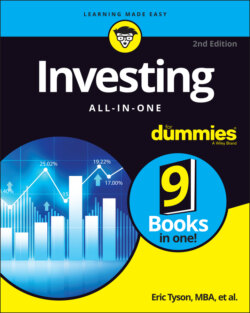Читать книгу Investing All-in-One For Dummies - Eric Tyson - Страница 142
P/E
ОглавлениеThe P/E ratio is the relationship between the price of a stock and the company’s earnings. P/E ratios are widely followed and are important barometers of value in the world of stock investing. The P/E ratio (also called the earnings multiple or just multiple) is frequently used to determine whether a stock is expensive (a good value). Value investors find P/E ratios to be essential to analyzing a stock as a potential investment. As a general rule, the P/E should be 10 to 20 for large-cap or income stocks. For growth stocks, a P/E no greater than 30 to 40 is preferable. (See Chapter 4 in Book 3 for full details on P/E ratios.)
In the P/E ratios reported in stock tables, price refers to the cost of a single share of stock. Earnings refers to the company’s reported earnings per share as of the most recent four quarters. The P/E ratio is the price divided by the earnings. In Table 1-1, VNI has a reported P/E of 12, which is considered a low P/E. Notice how SHC has a relatively high P/E (76). This stock is considered too pricey because you’re paying a price equivalent to 76 times earnings. Also notice that DBC has no available P/E ratio. Usually this lack of a P/E ratio indicates that the company reported a loss in the most recent four quarters.
